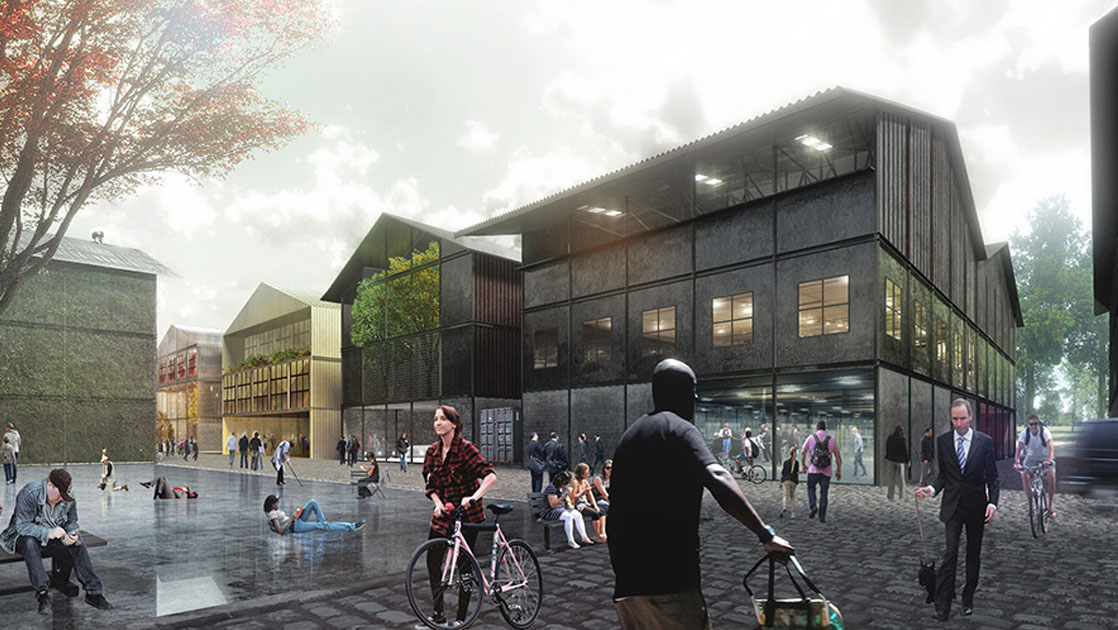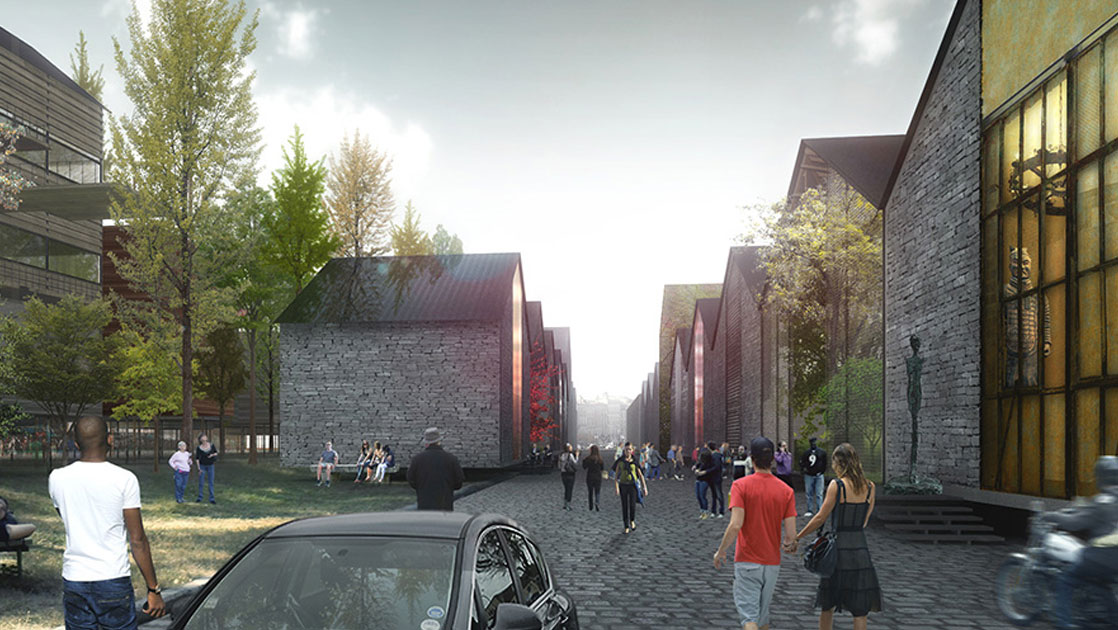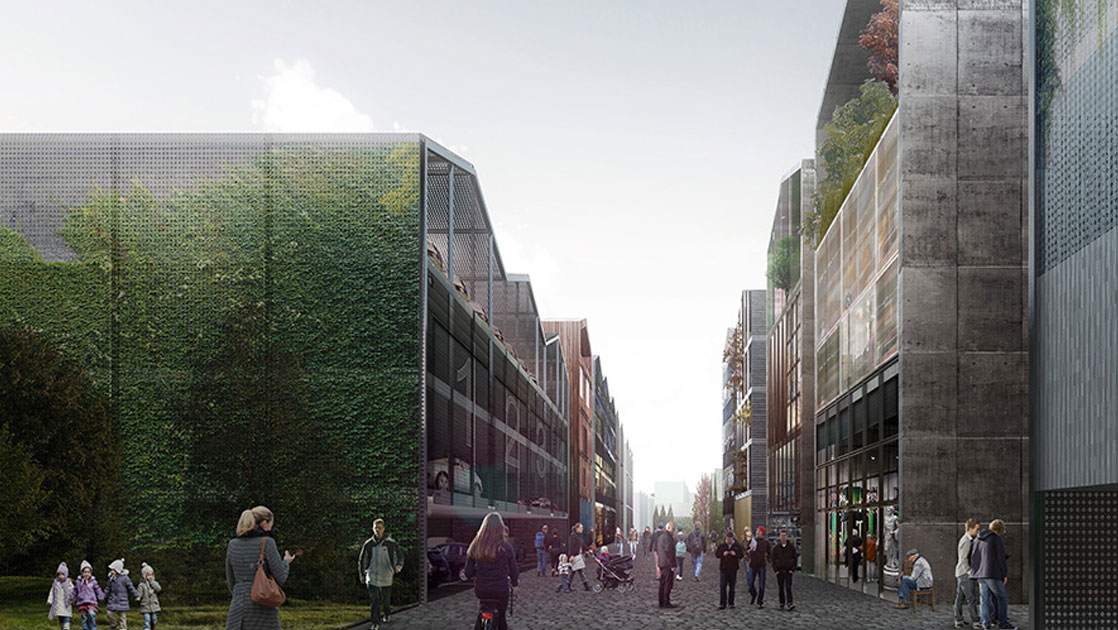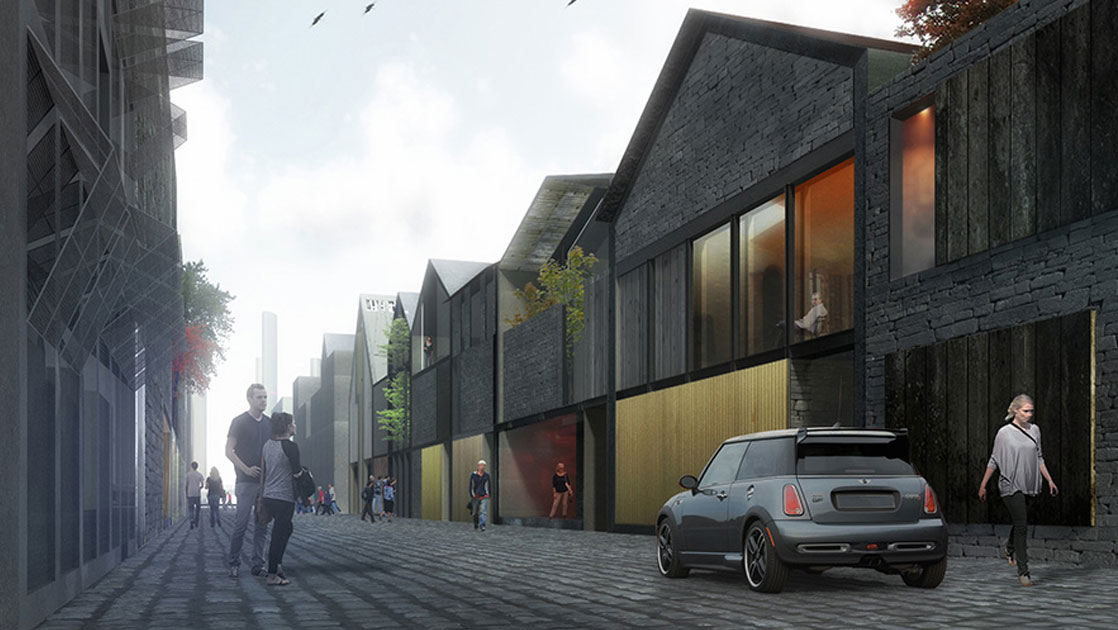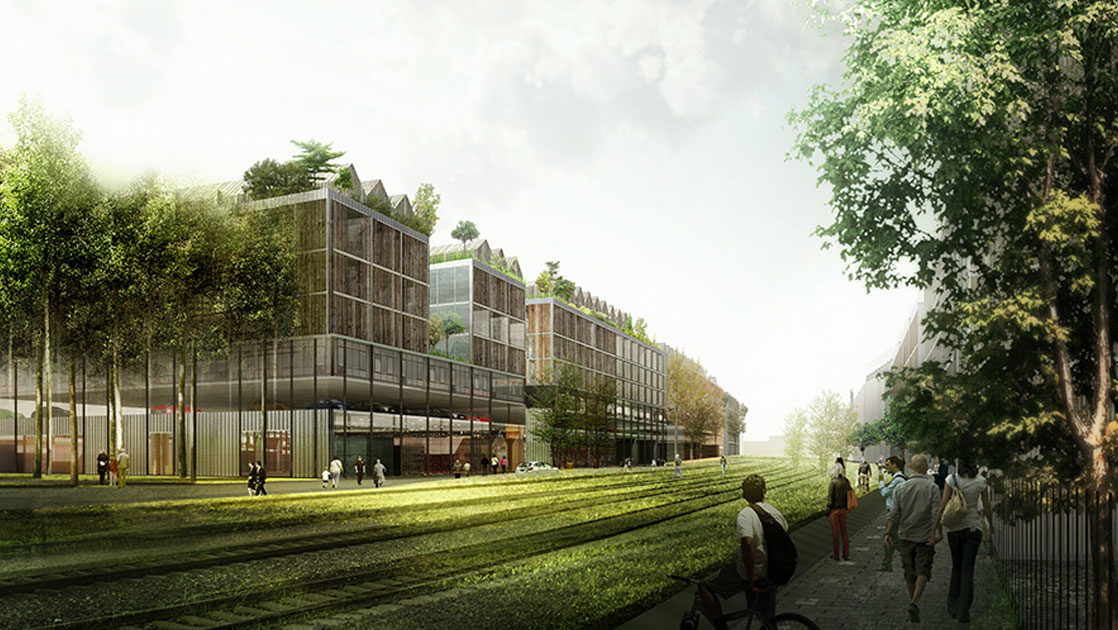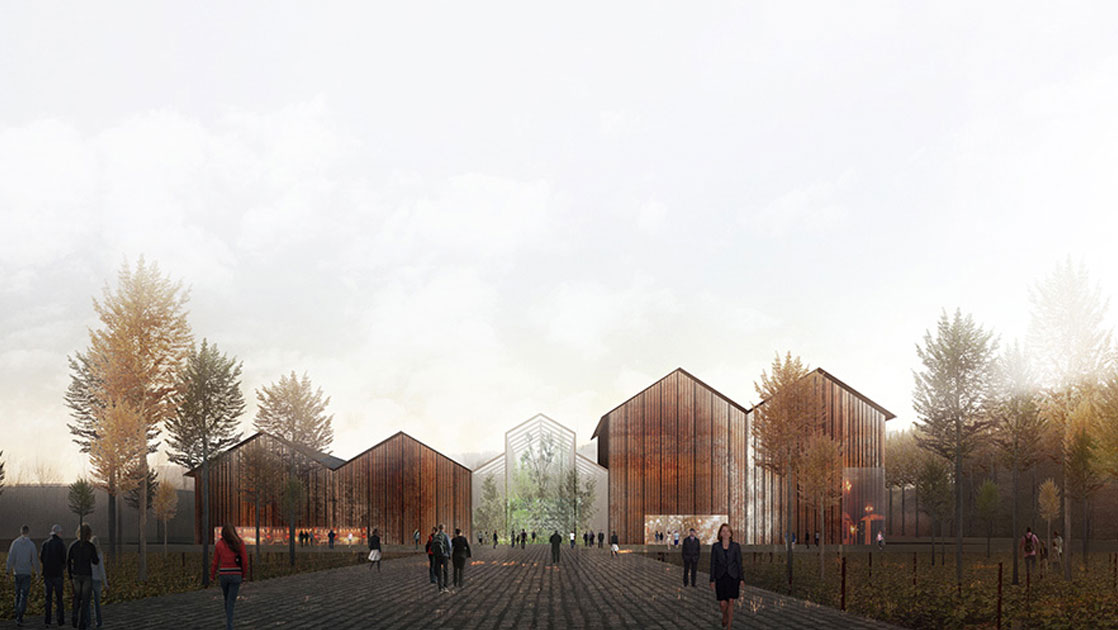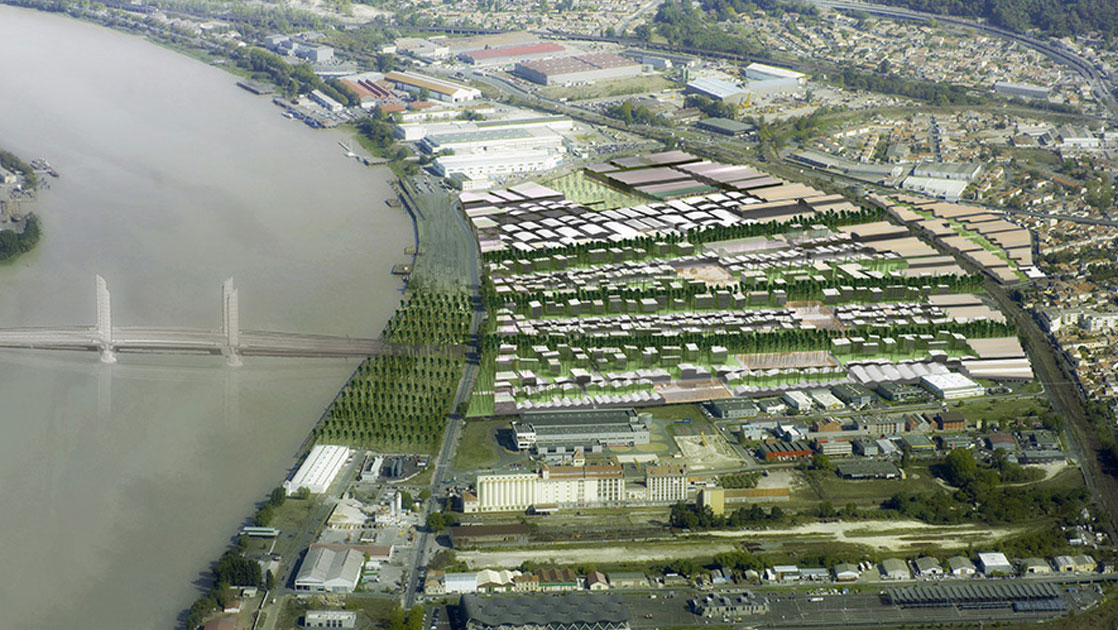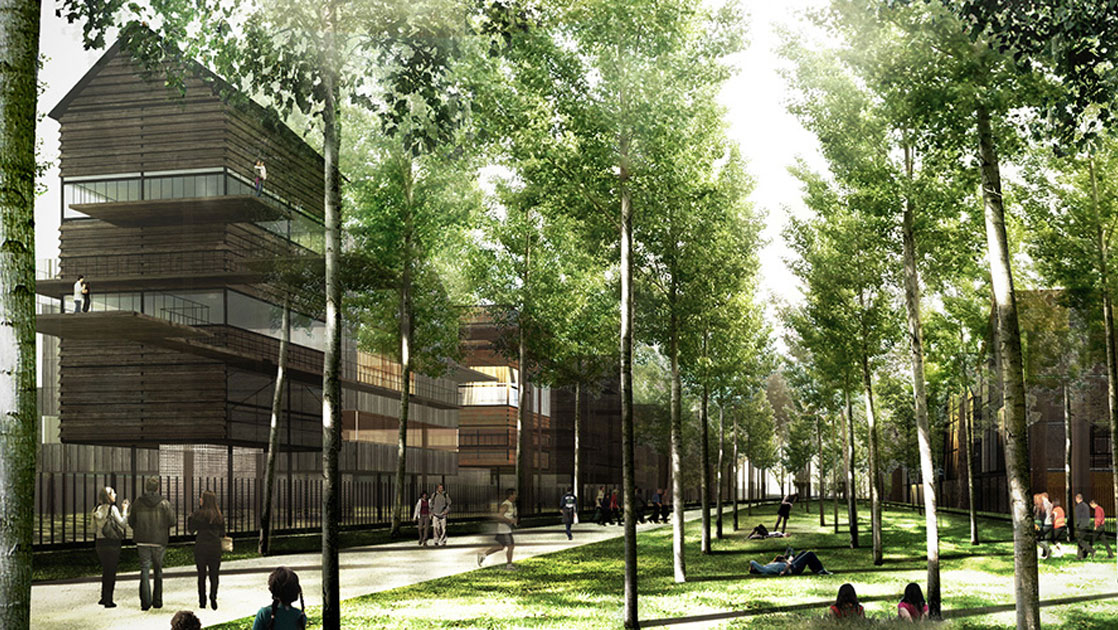Sitting on the right bank of the Garonne River, as opposed to the main areas of Bordeaux that are situated on the river’s left bank, Brazza is an area that had long been neglected, left to its own devices while the rest of Bordeaux flourished. Yet Brazza had many assets to offer the city: a direct relationship to the river and nearby Parc aux Angeliques, a generous scale of construction and a sense of limitless potential.
Anastasia Elrouss and YTAA-Youssef Tohme Architects & Associates sought to tap Brazza’s potential by creating a novel urban plan that would generate a network of relationships between the people, the Garonne River and Parc aux Angeliques, while reconfiguring the relationship between the people and the city.
The presence of large green spaces allowed for a pioneering approach to urban planning, one that is open and mainly free from the rules that usually govern traditional cities. In this new type of neighborhood, it’s possible to experience the city from almost any point of view: under a tree, near a school or even at home.
The basis for Anastasia Elrouss and YTAA’s proposal is to create one-off housing that introduces a new way of living, in freedom and in constant communication with the Garonne, nature and the surrounding scenery. Echoing Brazza’s existing architectural heritage, the new urban plan aims to develop inhabitable volumes rather than surfaces, places genuinely capable of being used, not just spaces to be filled. A key aspect is the increase of useable outdoor spaces: houses straddle the Garonne; a large public space is to be created near the water and dense clusters of housing merge with a park. Though dedicated primarily to housing, the adaptable volumes may also be used as workshops, offices or exhibition halls, depending on individual needs and possibilities. The floor plans and buildings’ flexibility also allow the architects to easily meet unexpected needs.
The identity of Bordeaux is tied to its existing setting and architecture as well as to its continuous evolution. Contemporary urban planning in Brazza must be creative and flexible enough to offer new structures that meet modern needs while respecting the architectural and natural environments that give Bordeaux its specificity. Boundaries that separate the natural from the manmade, and the old from the new, need to remain porous, in a transcendence of borders. At the same time, introducing new urban norms should serve to enhance both Brazza and Bordeaux, by developing different interpretations of what makes Bordeaux most special.
